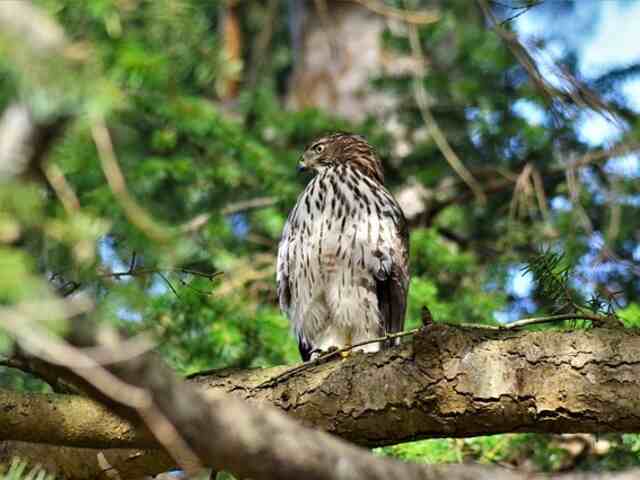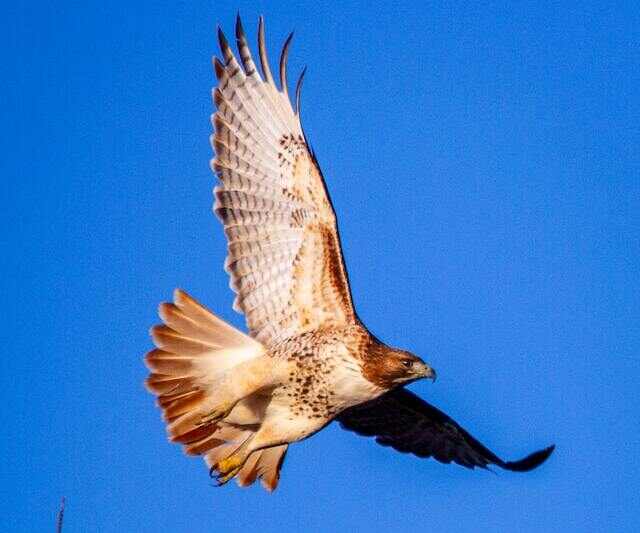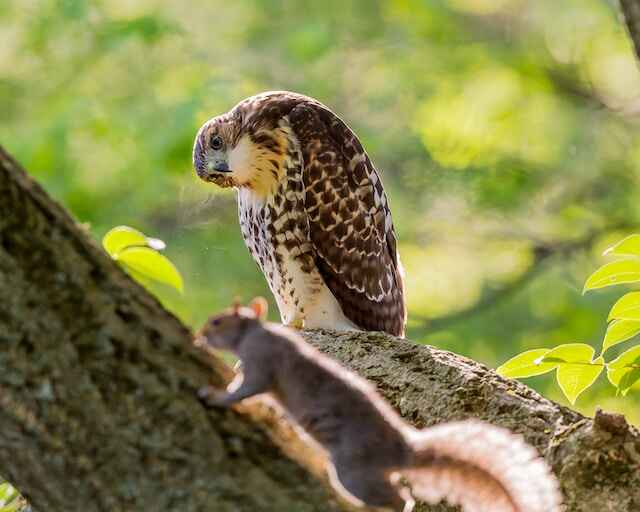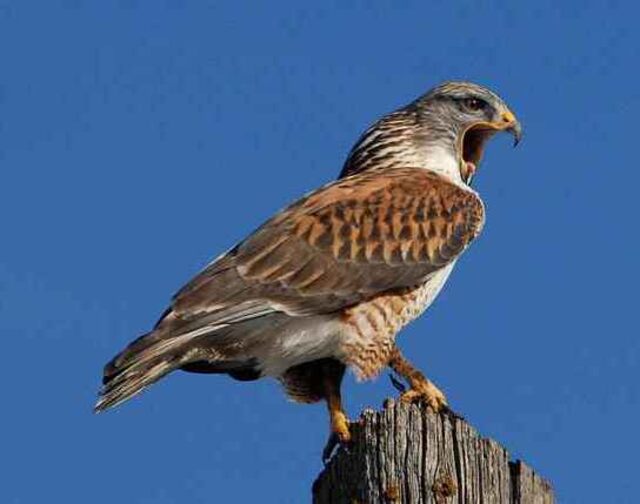Do hawks hunt at night? It’s a question that’s been puzzling bird lovers for ages. Well, the short answer is yes, they do! But the reasons why they hunt at night and what they do during that time may surprise you.
In this article, we’ll explore the fascinating world of nighttime hawk hunting and uncover some interesting facts about these majestic birds of prey. So, let’s dive in!
Table of Contents
- 1 Hawk Characteristics and Behavior
- 2 Do Hawks Hunt At Night?
- 3 Hawk Hunting Habits
- 4 Hawk Predators
- 5 Keeping Pets Safe from Hawks
- 6 The Most Endangered Hawks
- 7 Conclusion
- 8 FAQs: Do Hawks Hunt At Night?
- 8.1 What time of day are hawks most active?
- 8.2 Where do hawks sleep at night?
- 8.3 Why do hawks hang around your yard?
- 8.4 What season do you see hawks?
- 8.5 Why do hawks hunt chickens?
- 8.6 What scares hawks away?
- 8.7 Do hawks hunt at night?
- 8.8 Why do hawks hunt at night?
- 8.9 What do hawks eat at night?
- 8.10 Can hawks see in the dark?
- 8.11 Where do hawks sleep at night?
- 8.12 How do hawks hunt at night?
- 8.13 Are hawks dangerous at night?
- 8.14 How can I protect my pets from hawks at night?
- 8.15 Are there any laws protecting hawks that hunt at night?
- 8.16 Is it good to have hawks around?
- 9 Author
Hawk Characteristics and Behavior
Hawks are renowned predatory birds celebrated for their exceptional hunting abilities, razor-sharp talons, and remarkable visual acuity. These raptors are found all over the world and have adapted to a wide range of environments.
In this section, we will explore the physical and behavioral traits of hawks, including the unique features of different species and their crucial role in the ecosystem.

Physical and Behavioral Traits of Hawks
Hawks are known for their sharp vision, which enables them to spot prey from great distances. They also have powerful talons and hooked beaks, which they use to capture and kill their prey. Most hawks are diurnal, which means they are active during the day, but some species are known to hunt at night.
Different Species of Hawks and Their Unique Features
There are over 250 species of hawks, each with its own unique physical and behavioral characteristics. For example, the red-tailed hawk, one of the most common species in North America, has a distinctive red tail and can often be seen soaring high in the sky. The ferruginous hawk, on the other hand, is one of the largest hawks in North America, with a wingspan of up to 5 feet.
Role of Hawks in the Ecosystem
Hawks have a vital role in maintaining the ecosystem balance by regulating the populations of small mammals and birds. By preying on animals such as rodents and songbirds, hawks help to keep these populations in balance, which in turn helps to maintain healthy ecosystems.
Without hawks, these populations could grow unchecked, leading to overgrazing, disease, and other problems. In the next section, we will explore the question that many people ask: do hawks hunt at night? Let’s find out!

Do Hawks Hunt At Night?
Hawks are primarily diurnal hunters, but some species have adapted to hunting at night. These include the Letter-winged Kite which is the world’s only nocturnal hawk, the Northern Harrier, and the Common Black Hawk to name a few.
They use various methods such as stealth, sound, and low light vision to hunt in the dark. Hawks have superior vision, which helps them to navigate and locate prey in low light conditions.
The factors that influence their hunting behavior at night are weather conditions, prey availability, and breeding season.
Here’s a table of some hawk species that are known to hunt at night:
| Hawk Species | Common Name | Nocturnal Hunting Habits |
|---|---|---|
| Buteo jamaicensis | Red-tailed Hawk | Rarely hunts at night, but may hunt in low light conditions |
| Buteo lineatus | Red-shouldered Hawk | Rarely hunts at night, but may hunt in low light conditions |
| Accipiter striatus | Sharp-shinned Hawk | Occasionally hunts at night, especially during migration |
| Accipiter cooperii | Cooper’s Hawk | Occasionally hunts at night, especially during migration |
| Buteogallus anthracinus | Common Black Hawk | Hunts at night, especially during breeding season |
| Buteogallus urubitinga | Great Black Hawk | Hunts at night, especially during breeding season |
| Buteo nitidus | Gray Hawk | Hunts at night, especially during breeding season |
| Buteo albicaudatus | White-tailed Hawk | Hunts at night, especially during breeding season |
*Note that while these species are known to hunt at night, they are not strictly nocturnal hunters like some owl species.
Hawk Hunting Habits
Hawks are skilled predators that employ various techniques and strategies to capture their prey. Understanding their hunting habits can provide insights into their behavior and lifestyle. Here are some of the hunting habits of hawks:
Hunting techniques and strategies used by hawks:
- Stalking: Hawks are known for their stealth and patience when stalking prey. They will often perch in a high location, such as a tree or utility pole, and survey the area for potential prey. Once they have spotted their target, they will swoop down in a quick and silent attack.
- Ambush: Hawks may also use ambush tactics to catch their prey. They may hide behind trees or other objects, waiting for their prey to come within striking distance. Then they will quickly pounce on their prey and use their sharp talons to grab it.
- Soaring and Diving: Some species of hawks, such as the Cooper’s hawk, use a technique called “contour soaring” to fly at high altitudes and search for prey. Once they have spotted their target, they will dive at incredible speeds, sometimes reaching over 100 miles per hour, to catch their prey.
Preferred prey of hawks:
- Small mammals: Hawks are known to prey on a variety of small mammals, including rodents like mice, voles, and squirrels. They may also hunt rabbits, hares, and other small game.
- Birds: Some species of hawks, such as the sharp-shinned hawk, are known to prey on smaller birds, including sparrows, finches, and other songbirds. Larger species of hawks, such as the red-tailed hawk, may prey on larger birds like pheasants and ducks.
- Reptiles and Amphibians: Hawks may also hunt reptiles and amphibians, including snakes, lizards, frogs, and toads.
Frequency and timing of hunting:
- Daytime hunting: Hawks are primarily diurnal hunters, meaning they hunt during the daytime. They have keen eyesight and can spot prey from great distances.
- Hunting during dawn and dusk: Some species of hawks, such as the red-tailed hawk, may hunt during the early morning or late afternoon when the light is low. This is known as crepuscular hunting.
- Nocturnal hunting: While hawks are not known to hunt exclusively at night, they may occasionally hunt during the night, especially during the full moon when visibility is better. However, hunting at night is more common in owls than in hawks.
By understanding the hunting habits of hawks, we can better appreciate their role in our ecosystem and the skills they possess as predators.

Hawk Predators
One of the primary predators of hawks is other birds of prey, such as eagles and owls. These predators have been known to attack hawks and steal their prey, causing hawks to become more cautious and change their hunting patterns.
Additionally, hawks may also fall prey to larger mammals such as foxes, bobcats, and coyotes. The impact of predators on hawk hunting behavior can also vary depending on the species of hawk.
For example, larger hawks such as the red-tailed hawk may be less vulnerable to predators due to their size and strength. On the other hand, smaller hawks such as the sharp-shinned hawk may be more susceptible to predation.
Humans can also have an unintentional impact on hawk populations by altering their natural habitats. Urbanization and deforestation can displace hawks from their native habitats and reduce their available prey, which can lead to declines in their populations.
Additionally, accidental poisoning from pesticides and other toxins can also have a devastating impact on hawk populations.
Keeping Pets Safe from Hawks
Keeping pets safe from hawks is a crucial concern for many pet owners. While hawks generally do not pose a threat to humans, they can view small pets as prey.
As a result, it’s essential to take precautions to ensure your furry friends are safe from these birds of prey. Here are some tips and misconceptions to help you keep your pets safe:
Tips for Keeping Pets Safe from Hawks
- Keep pets indoors: The simplest way to keep your pets safe from hawks is to keep them indoors, especially during the daytime when hawks are most active.
- Supervise outdoor time: If your pets enjoy spending time outside, ensure they are supervised, especially during the daytime.
- Use physical barriers: Installing physical barriers such as fencing, netting or even bird spikes can help keep hawks from entering your property and preying on your pets.
- Avoid using bird feeders: Bird feeders can attract prey to your yard, which, in turn, can attract hawks looking for a meal.
- Educate yourself: Learn more about hawks and their behavior to better understand how to protect your pets.
Common Misconceptions about Hawk Attacks on Pets
- Hawks only attack small pets: While smaller pets like rabbits, rodents, and cats are more vulnerable, hawks can also prey on larger dogs.
- Hawks are not a threat to pets in urban areas: Hawks can thrive in urban areas, and pets in these areas are also at risk of being attacked.
- Hawks only hunt during the day: While hawks are primarily diurnal, some species can hunt at night, so it’s essential to take precautions even at night.
By following these tips and understanding common misconceptions, you can help keep your pets safe from hawks. Remember, taking precautionary measures is crucial to ensure your pets’ safety and well-being.

The Most Endangered Hawks
Hawks are majestic birds of prey that have fascinated humans for centuries. Unfortunately, several hawk species are on the brink of extinction due to various factors such as habitat loss, hunting, and pollution.
This section will delve into the most endangered hawk species, why they are in decline, and the efforts being made to conserve them.
Rufous-necked Hawk
Rufous-necked Hawk is a bird of prey found in the Andean region of South America. The population of this hawk has been declining due to habitat loss and fragmentation, as well as illegal hunting.
This species prefers to live in cloud forests and high-altitude grasslands, which are rapidly disappearing due to deforestation and urbanization.
Moreover, Rufous-necked Hawks are often hunted for their feathers, which are used in traditional indigenous ceremonies.
Due to these threats, the International Union for Conservation of Nature (IUCN) has listed Rufous-necked Hawk as “Near Threatened” on its Red List of Threatened Species.
Ridgway’s Hawk
Ridgway’s Hawk is a critically endangered species of bird of prey found in the Dominican Republic and Haiti. This species is threatened by habitat loss, as well as the illegal pet trade.
Ridgway’s Hawk once thrived in open woodland and savannah habitats, but due to deforestation and land use changes, the population has been severely reduced.
Additionally, the species is targeted by poachers, who capture young hawks to sell as pets or for use in falconry.
Conservation efforts are underway to protect the remaining habitat, and captive breeding programs have been established to bolster the population.
The IUCN has listed Ridgway’s Hawk as “Critically Endangered” on its Red List.
Conclusion
Hawks are skilled predators that have adapted to hunting during both day and night. While some species are known to hunt more actively at night, others may rely on daylight hours.
Their hunting techniques and preferred prey vary, but it is important to keep them around for their ecological role. Overall, understanding hawk hunting behavior can help us appreciate these magnificent birds even more.

FAQs: Do Hawks Hunt At Night?
What time of day are hawks most active?
Hawks are primarily active during the daytime and exhibit the highest levels of activity during the early morning and late afternoon hours.
Where do hawks sleep at night?
Hawks sleep on tree branches, cliffs, and other high places. They prefer to sleep in areas where they have a good view of their surroundings.
Why do hawks hang around your yard?
Hawks may be attracted to your yard if there are ample food sources, such as rodents or small birds. They may also be using your yard as a hunting ground or as a place to rest.
What season do you see hawks?
Hawks are present year-round, but are most visible during the fall migration and winter months when they are searching for food.
Why do hawks hunt chickens?
Hawks hunt chickens because they are a source of food. They are attracted to chickens that are left unprotected and vulnerable.
What scares hawks away?
Hawks can be scared away by loud noises, sudden movements, and bright lights. Setting up reflective tape or hanging shiny objects can also help deter them.
Do hawks hunt at night?
Yes, some species of hawks hunt at night, while others are strictly diurnal.
Why do hawks hunt at night?
Hawks that hunt at night are typically nocturnal hunters, as their prey is active during the nighttime hours.
What do hawks eat at night?
Hawks that hunt at night typically feed on small mammals, birds, and insects.
Can hawks see in the dark?
Hawks have excellent vision, but they are not able to see in complete darkness. They rely on moonlight and starlight to navigate and hunt.
Where do hawks sleep at night?
Hawks typically sleep in trees or other elevated locations, such as cliffs or rocky outcroppings.
How do hawks hunt at night?
Hawks that hunt at night use their keen sense of hearing and vision to locate their prey. They swoop down on their prey from above, using their talons to grab and kill it.
Are hawks dangerous at night?
Hawks are not typically dangerous to humans at any time of day, including at night. However, they may attack small pets if they perceive them as prey.
How can I protect my pets from hawks at night?
To protect your pets from hawks at night, keep them indoors or in a secure outdoor enclosure.
Are there any laws protecting hawks that hunt at night?
Yes, hawks and other birds of prey are protected under the Migratory Bird Treaty Act, which makes it illegal to harm or kill them.
Is it good to have hawks around?
Hawks help balance ecosystems by controlling small animal populations. They are also a natural part of the food chain and help keep ecosystems healthy.




